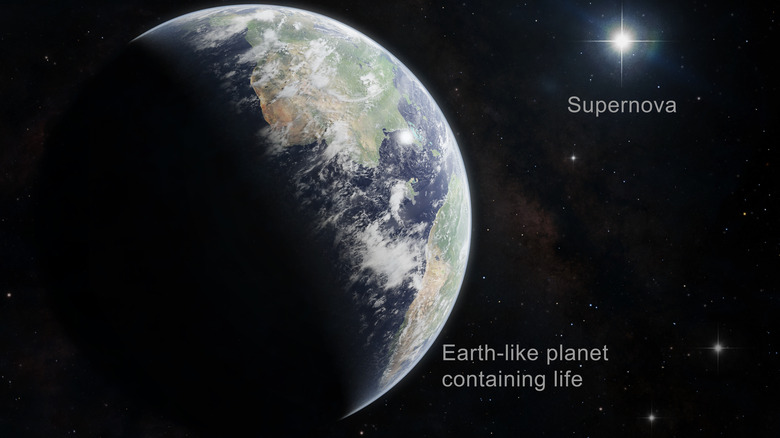X-Rays From Supernovae Can Reach Worlds Light-Years Away
Stellar explosions are eventful cosmic phenomena that light up the sky, but they can also be incredibly destructive for nearby planets. Depending on the blast radius and the size of the star, the immense amount of energy and radiation released from a supernova can strip away a planet's atmosphere, disrupt its magnetic fields in a catastrophic way, or even enrich them with heavy elements. Fresh observations made using NASA's Chandra X-ray Observatory and other telescopes has revealed that electromagnetic waves — including dangerous X-rays originating from a supernova — can reach planets years after the stellar exposure and potentially trigger an extinction-level crisis.
Following an observation of 31 supernovae events in the X-ray spectrum — performed by the Chandra X-ray Observatory, Swift and NuSTAR missions, as well as the European Space Agency's XMM-Newton system — a team of scientists deduced that the lethal radiation can affect planets as far away as 160 light years. Experts from Washburn University, the University of Kansas, and the University of Illinois Urbana-Champaign have collaboratively published research in The Astrophysical Journal, which details how that X-ray irradiation can dramatically disturb the chemistry of a planet's atmosphere. Their findings reveal that these effects can be cataclysmic and long-lasting.
An new intermediate planetary crisis
If we take a planet like Earth, the X-ray wave striking its atmosphere would produce a torrent of charged particles and disrupt the ozone layer. Without ozone layer protection, ultraviolet rays from the host star could have an adverse impact on the planet's life forms and lead to an extinction-scale event. With continued radiation exposure, the atmosphere will produce a brown haze composed of nitrogen dioxide that will also gradually wipe away the greenery.
A major takeaway from the research is that it alters our understanding of the time that it takes for a supernova explosion to have an impact on nearby planets. The official research release published by the University of Illinois Urbana-Champaign explains, "If the supernova's blast wave strikes dense surrounding gas, it can produce a particularly large dose of X-rays that arrives months to years after the explosion and may last for decades."
In the past, scientists have focused on the immediate and long-term impacts of a stellar explosion. The first wave of radiation flood engulfs a nearby planet within days to months after the cataclysmic event, while the energetic cosmic particles can take hundreds of thousands of years to hit a planet. The Earth is currently not in danger of such a star-catalyzed apocalypse because there is no such supernova happening in proximity within the X-ray spectrum, but there are signs that a supernova explosion happening some 2 to 8 million years ago had an impact on element formation brewing on our planet.

